Exploring a New Genre: Micro EV Tractor Utilizing a Small Low-Speed EV General-Purpose Platform
We took on the challenge of mobility design to address issues in agriculture using Yamaha Motor’s general-purpose EV platform for personal low-speed mobility, “DIAPASON.” Japan’s agriculture sector faces complex issues, particularly aging and labor shortages. From another perspective, however, this means there is great potential for solutions through new mobility innovations. Thus, we aimed to explore designs that not only pursue functionality but also propose a new direction for the future of agriculture that appeals to the next generation.
Driving Agile Planning, Design, and Prototyping with Market and User Validation
To advance new ideas and businesses, it is crucial to develop designs and prototypes swiftly and flexibly and validate market reactions agilely. Quickly adapting to user feedback and delivering more appealing mobility solutions early on helps avoid significant failures and reduce risks.
Given this background, the project set an ambitious goal of unveiling at Japan’s largest motor show, the “Tokyo Auto Salon 2024,” while actively utilizing generative AI to pioneer new possibilities. Despite a tight schedule of fewer than three months from the start, we significantly updated the conventional process as we progressed. This not only ensured we met the timeline but also allowed us to experiment with a diverse range of mobility options, expanding our creativity further.
The result of this challenge was a mobility solution that not only achieved an attractive and innovative design but also exceeded expectations by accelerating communication across different fields, fostering empathy and co-creation.
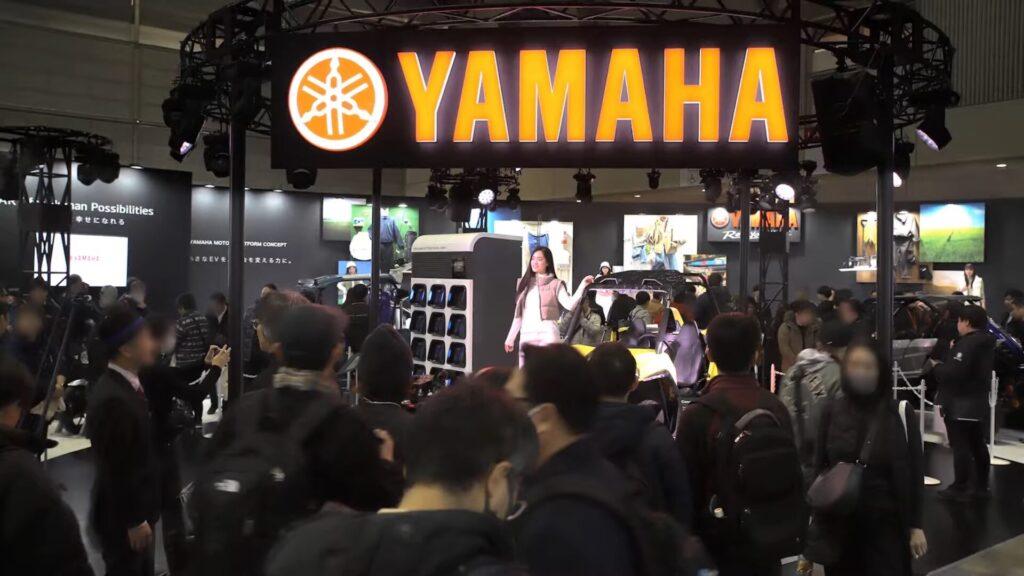
Generative AI Transforming Initial Concepts and Idea Generation
From the initial stages of concept design, such as mobility ideation, concept development, and requirement definitions, we fully utilized text and image-generative AI. During the initial conceptual phase, we employed generative AI to raise the resolution of hypotheses and understanding based on our design exploration and questions like, “What role will agriculture be required to play in addressing future societal challenges?”
We explored topics such as:
- Future environmental and social contexts and challenges in agriculture:
Broadly identifying potential future problems and exploring directions for products to address them. - Functional requirements for a single-seater EV designed for farmland and mountainous areas:
Specifying vehicle configurations capable of high performance under specific conditions. - Exterior design requirements balancing functionality and emotional value
Pursuing a design that not only emphasizes practicality but also evokes an emotional appeal for users. Specifically, based on the aforementioned societal and industry challenges, we considered targeting users who are not currently engaged in agriculture but have an interest in it, as well as appealing to younger generations to address the issue of an aging workforce.
What stood out as we moved to the next phase of design development was how seamlessly the process progressed, with almost no boundary between conceptualizing and developing concrete ideas, enabling countless iterations.
Within just two weeks, we generated over 2,400 design ideas, focusing on functionality and feasibility before refining them into a single product design. The integration process for converging these designs was also facilitated by the introduction of generative AI.
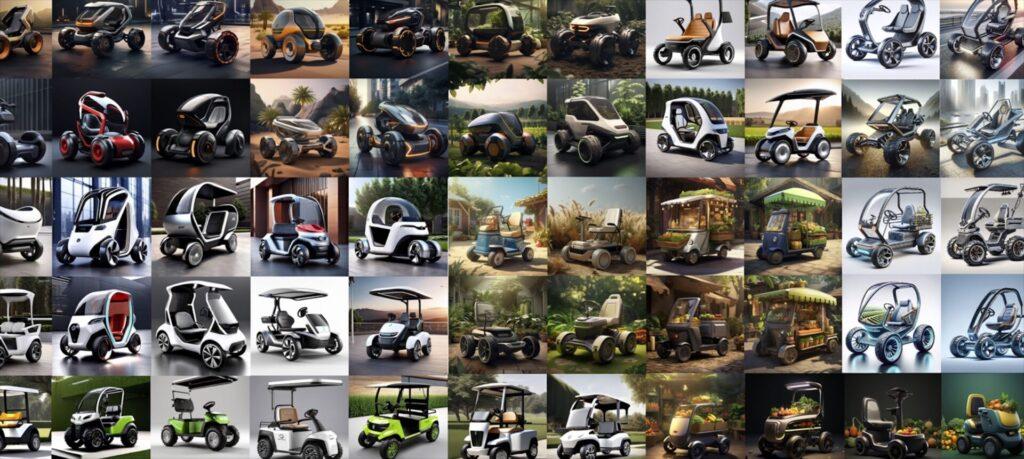

We also challenged ourselves to utilize generative AI as extensively as possible in the final stage of detailed design formulation. Reflecting on the results of attempting this new process, we realized that not only was generative AI invaluable, but the experience of designers and the engineering and production expertise accumulated by Yamaha Motor also played a significant role. By complementing each other, generative AI and humans created a prototype that was not just an idealistic concept but one that could be realized.
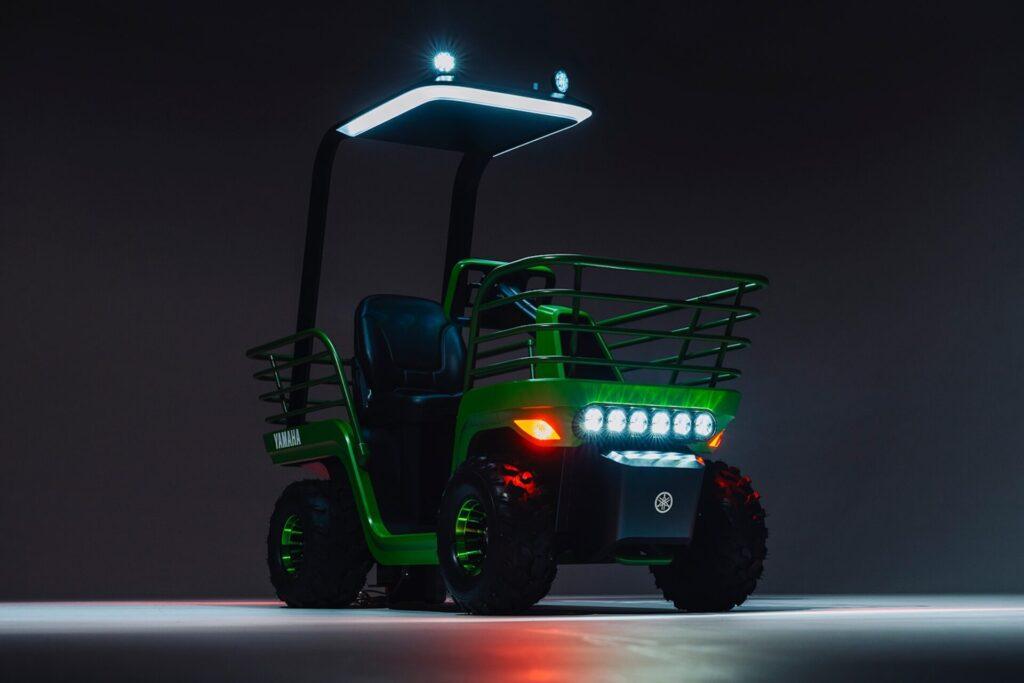
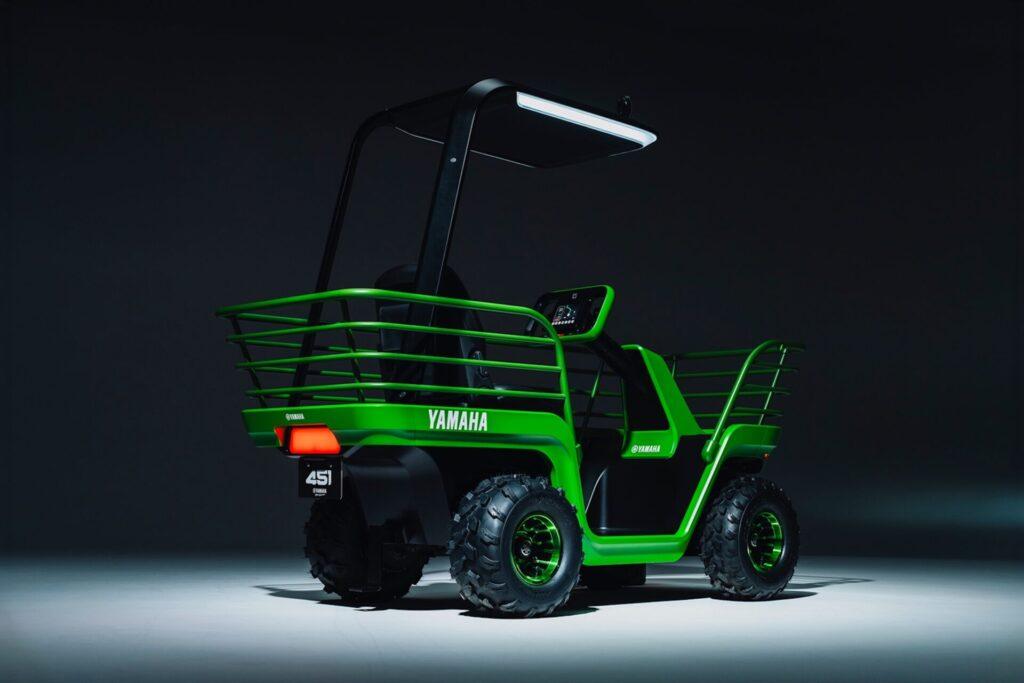
New Frontiers in Design Opened by Generative AI
The deciding factor for the final design’s adoption was its practicality as a micro-EV tractor combined with its intriguing and fresh styling. Many standout design elements would have been difficult to conceive through traditional design ideation processes.
Examples of innovative design elements proposed by generative AI include:
- Basket-like silhouette:
A drastically reverse-slanted silhouette reminiscent of a basket maximizes loading capacity for small vehicles used in farming while presenting visual novelty uncommon in traditional styling. - Asymmetric body:
Breaking the conventional rule of symmetrical designs, this feature improves ease of boarding and safety while enhancing body rigidity. Visually, it creates a dynamic and distinctive design.
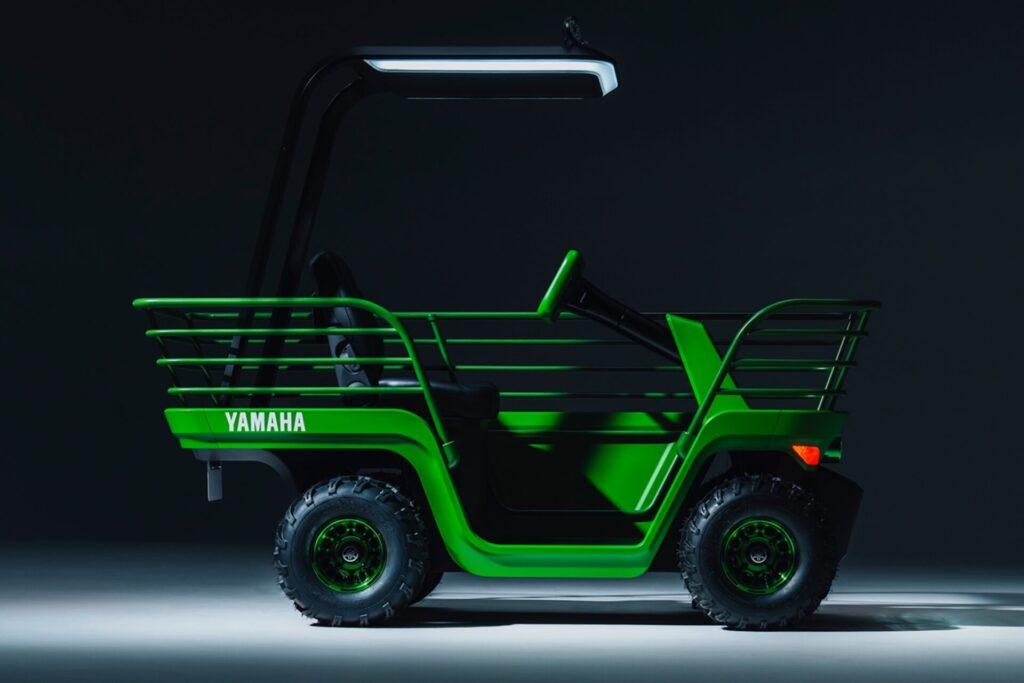
- A roof without front pillars:
By eliminating the typically indispensable front pillars, we achieved an open and innovative structure that enhances visibility, making it safer to navigate narrow farm paths or forest trails. - Bold front face with six lamps:
Surpassing the conventional two or four-lamp setups, a six-lamp front design ensures visibility during early mornings, evenings, or adverse weather conditions. While meeting functional needs, it also delivers a futuristic, unique front view.
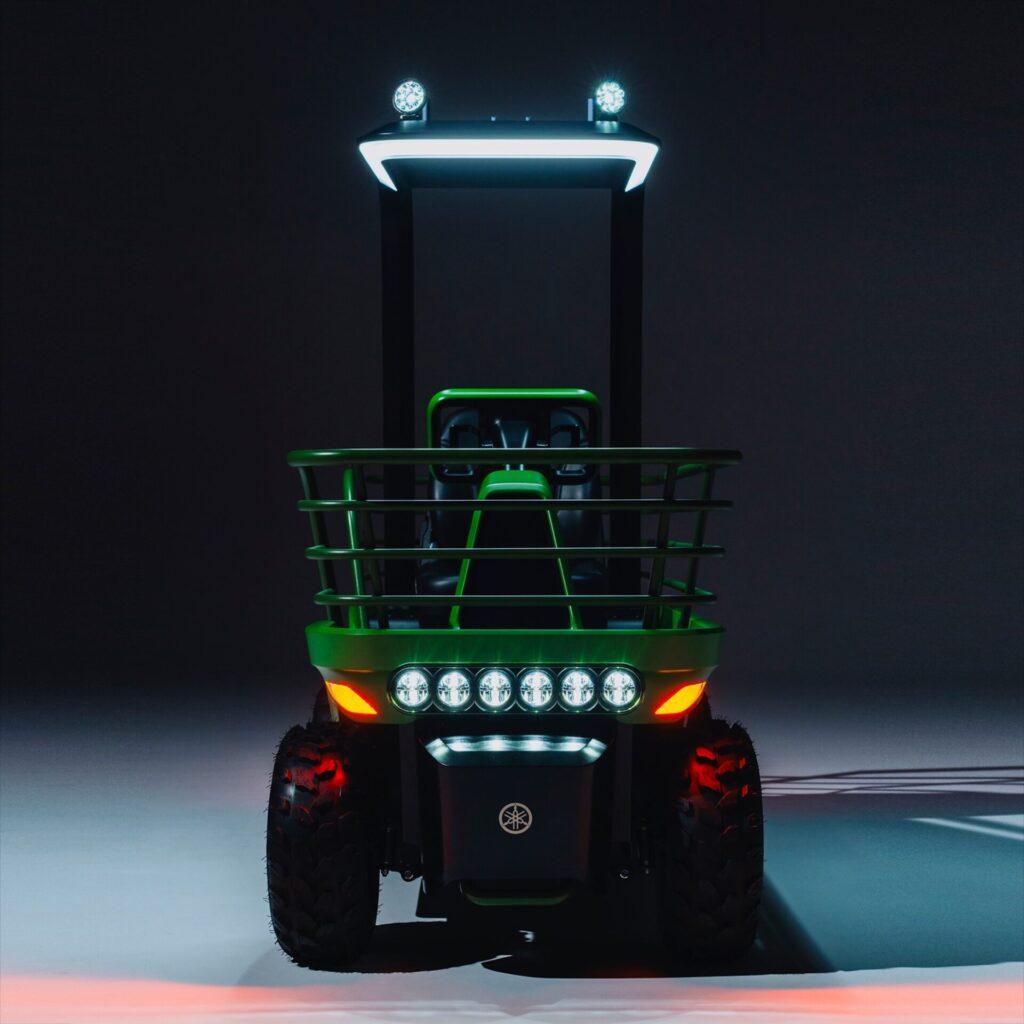
These design elements demonstrated the diverse potential of ideas enabled by generative AI, revealing possibilities often overlooked in conventional processes. Generative AI goes beyond human tendencies to develop based on prior experiences or existing products, stimulating ideas outside these constraints and unlocking new creativity.
Seamless Interdisciplinary Collaboration and Communication Enabled by Generative AI
Another significant benefit of introducing generative AI into design was the dramatic improvement in team communication. Specialists across disciplines—design, engineering, manufacturing, and promotion—could share visuals generated by AI instantly. This facilitated smooth communication of intentions that are typically hard to verbalize, deepening discussions and accelerating consensus-building and decision-making across the project.
Personally, I felt this unexpected benefit was one of the greatest advantages of adopting generative AI in this project. This experience reaffirmed that generative AI is not merely a design tool but a powerful means of strengthening overall team collaboration.
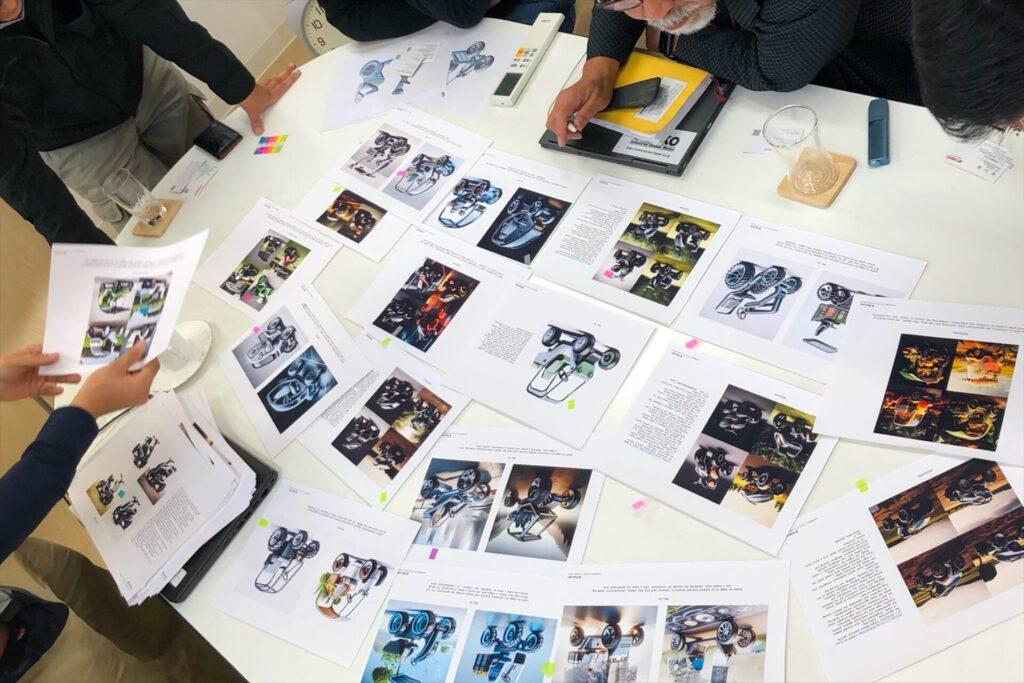
A New Process of Complementary Collaboration Between Generative AI and Human Designers
In this process, the complementary collaboration between generative AI and human designers enabled the creation of designs that appealed not only visually but also functionally and emotionally. This project exemplifies how generative AI extends conventional creation, paving the way for new frontiers in design.
While the convenience and innovation of generative AI are often highlighted, the management and protection of intellectual property resulting from its introduction have become a global challenge. In the project with Yamaha Motor, we implemented innovative approaches to overcome these challenges.
In the next article, we will focus on the relationship between generative AI and intellectual property, explaining how we addressed these issues in this project.

![by Car Styling [カースタイリング]](https://motor-fan.jp/wp-content/uploads/2025/04/carstyling-jp_logo.png)






